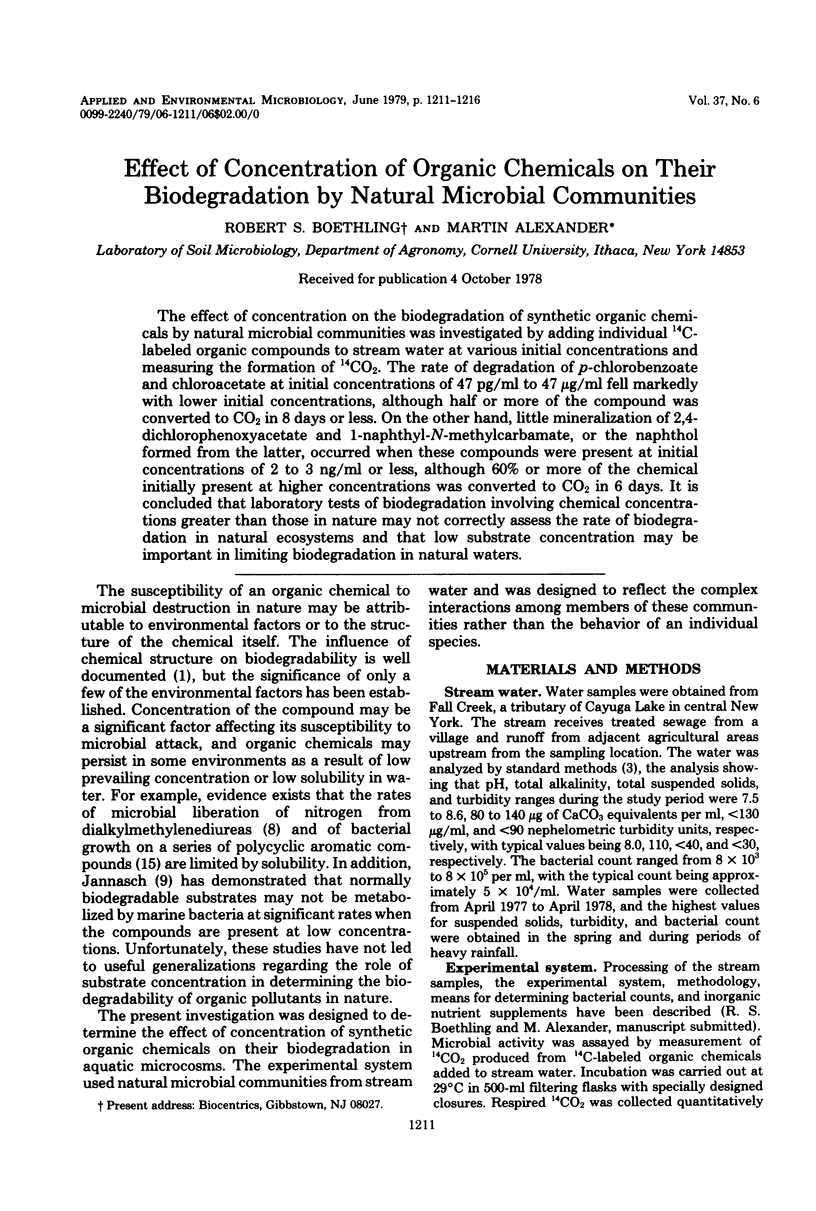Abstract
The effect of concentration on the biodegradation of synthetic organic chemicals by natural microbial communities was investigated by adding individual 14C-labeled organic compounds to stream water at various initial concentrations and measuring the formation of 14CO2. The rate of degradation of p-chlorobenzoate and chloroacetate at initial concentrations of 47 pg/ml to 47 μg/ml fell markedly with lower initial concentrations, although half or more of the compound was converted to CO2 in 8 days or less. On the other hand, little mineralization of 2,4-dichlorophenoxyacetate and 1-naphthyl-N-methylcarbamate, or the naphthol formed from the latter, occurred when these compounds were present at initial concentrations of 2 to 3 ng/ml or less, although 60% or more of the chemical initially present at higher concentrations was converted to CO2 in 6 days. It is concluded that laboratory tests of biodegradation involving chemical concentrations greater than those in nature may not correctly assess the rate of biodegradation in natural ecosystems and that low substrate concentration may be important in limiting biodegradation in natural waters.
Full text
PDF





Selected References
These references are in PubMed. This may not be the complete list of references from this article.
- Alexander M. Biodegradation: problems of molecular recalcitrance and microbial fallibility. Adv Appl Microbiol. 1965;7:35–80. doi: 10.1016/s0065-2164(08)70383-6. [DOI] [PubMed] [Google Scholar]
- Batterton J., Winters K., Van Baalen C. Anilines: selective toxicity to blue-green algae. Science. 1978 Mar 10;199(4333):1068–1070. doi: 10.1126/science.415361. [DOI] [PubMed] [Google Scholar]
- Powers C. D., Rowland R. G., O'Connors H. B., Jr, Wurster C. F. Response to polychlorinated biphenyls of marine phytoplankton isolates cultured under natural conditions. Appl Environ Microbiol. 1977 Dec;34(6):760–764. doi: 10.1128/aem.34.6.760-764.1977. [DOI] [PMC free article] [PubMed] [Google Scholar]
- Wodzinski R. S., Johnson M. J. Yields of bacterial cells from hydrocarbons. Appl Microbiol. 1968 Dec;16(12):1886–1891. doi: 10.1128/am.16.12.1886-1891.1968. [DOI] [PMC free article] [PubMed] [Google Scholar]


